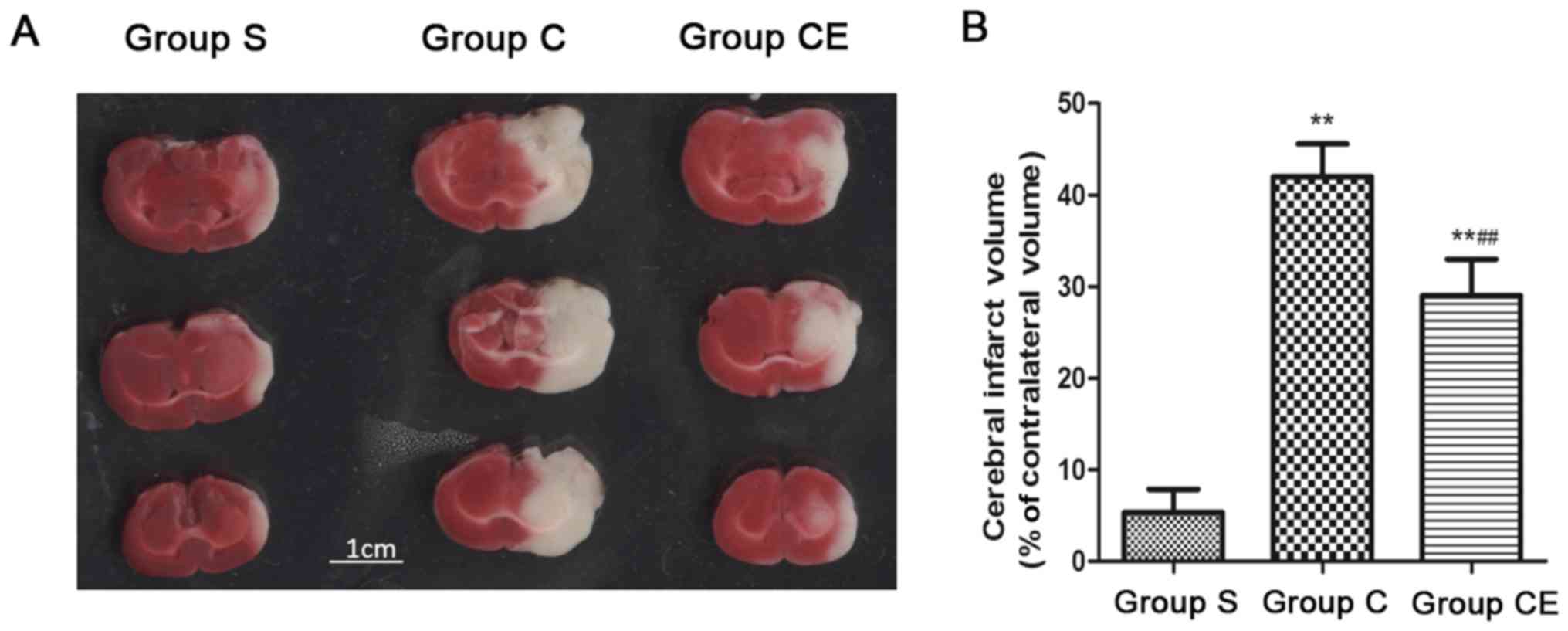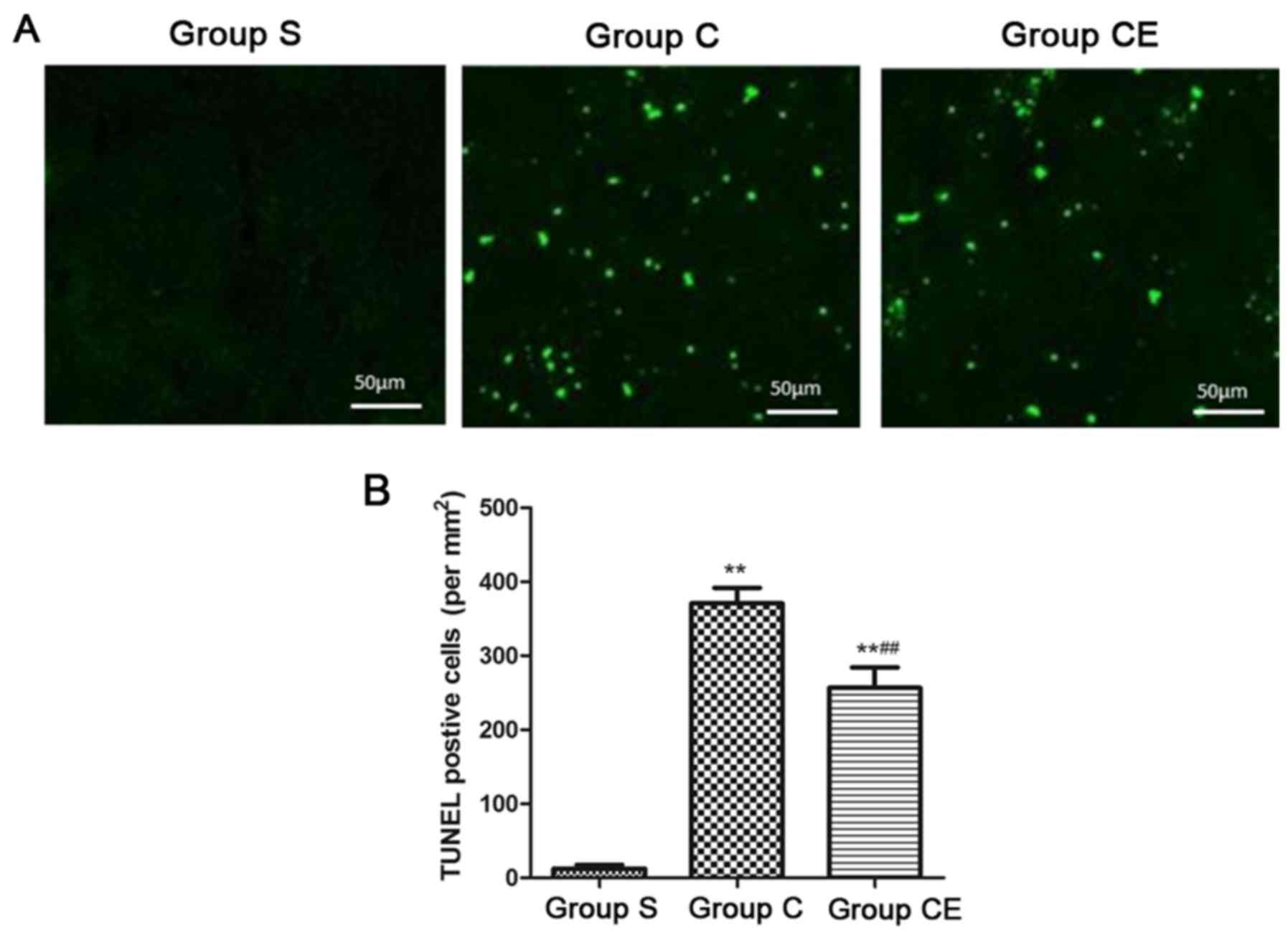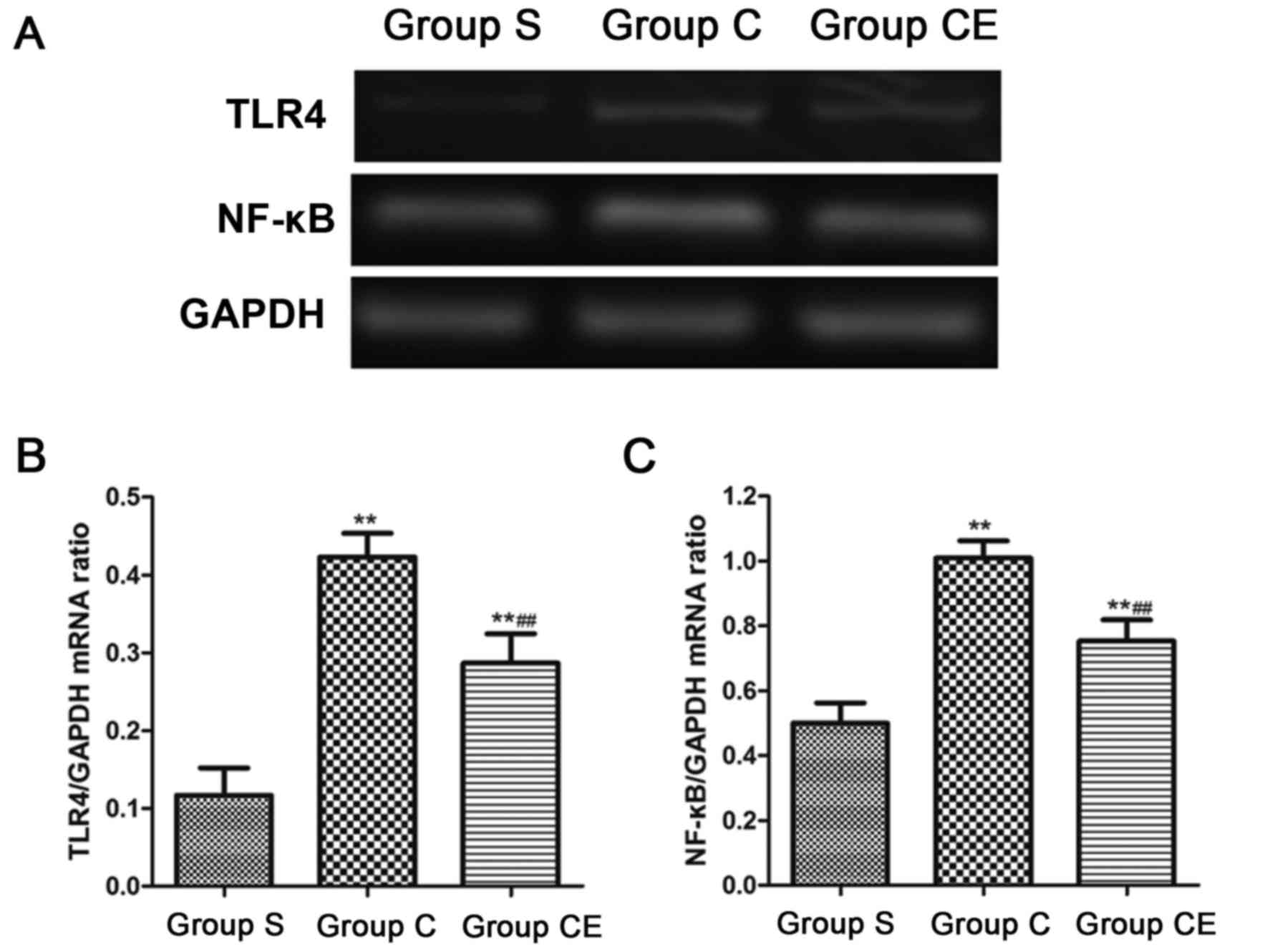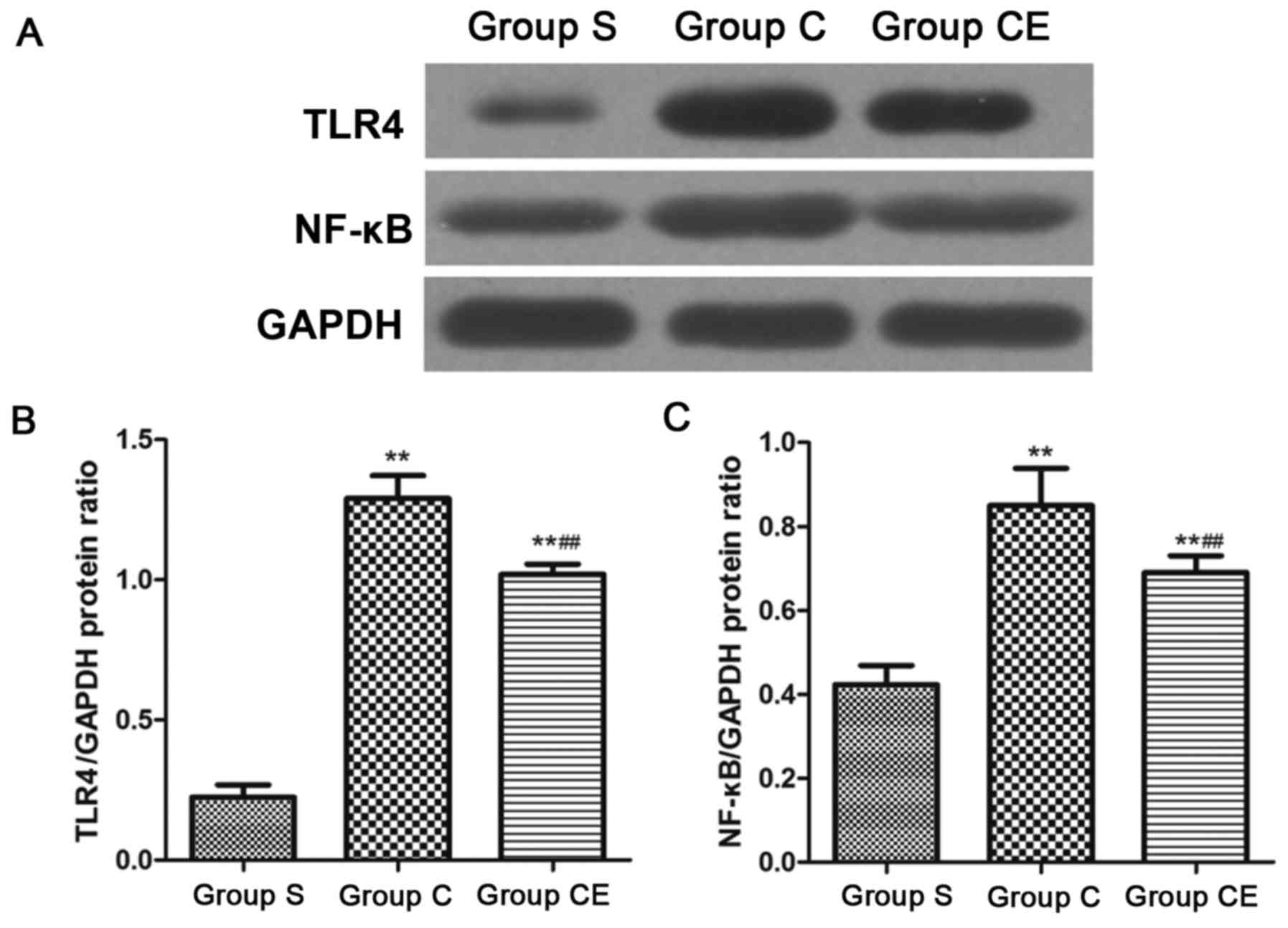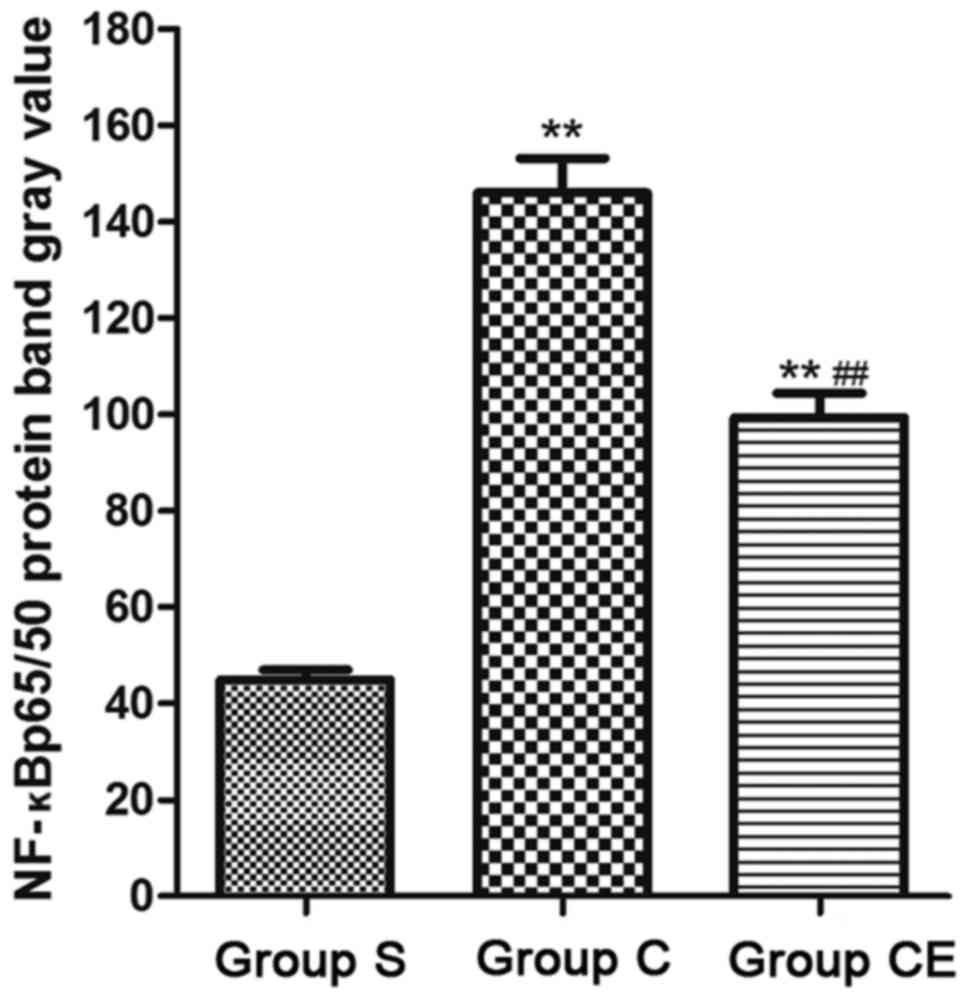The effect of focal cerebral ischemia-reperfusion injury on TLR4 and NF-κB signaling pathway
- Authors:
- Published online on: November 8, 2017 https://doi.org/10.3892/etm.2017.5463
- Pages: 897-903
-
Copyright: © Chen et al. This is an open access article distributed under the terms of Creative Commons Attribution License.
Metrics:
Total
Views: 0 (Spandidos Publications: | PMC Statistics:
)
Total PDF Downloads: 0 (Spandidos Publications: | PMC Statistics:
)
Abstract
The present study analyzed the change of Toll-like receptor 4 (TLR4) and nuclear factor-κB (NF-κB) expression in focal cerebral ischemia-reperfusion injury model. A sample of 36 Sprague-Dawley rats were randomly selected and divided into sham operation group (group S), control group (group C) and Chrysanthemum ester group (NF-κB inhibitor, group CE), each group consisted of 12 rats. The rat model of focal cerebral ischemia-reperfusion was established. The physiological indexes and neurological severity score of rats was recorded by a double-blind method. The cerebral infarction area was evaluated by triphenyltetrazole oxide (TTC) staining on brain slices. Apoptosis was evaluated by TUNEL staining. Semi-quantitative PCR and western blot analysis was used to measure the expression of TLR4 and NF-κB. The neurological severity score of rats in group C and CE were found to be significantly lower than group S (P<0.01). The TTC staining results showed that group C and CE had different levels of cerebral infarction but the area of infarction in group CE was significantly lower than group C (P<0.01). In addition, the number of TUNEL positive cells in group CE was significantly lower than group C (P<0.01). Semi-quantitative PCR and westernblot analysis results showed that the expression of NF-κB and TLR4 of group S was significantly lower than that of group C and group CE (P<0.01), the relative expression of NF-κB and TLR4 of group CE was significantly lower than that of group C (P<0.01). Moreover, the expression of NF-κB p65/p50 of group CE and group C was significantly higher than that of group S (P<0.01). This study concludes that the focal cerebral ischemia-reperfusion injury in rats can cause brain damage and cell apoptosis. This effect might be associated to the increased expression of NF-κB and TLR4, and the activation of TLR4/NF-κB signaling pathway.




